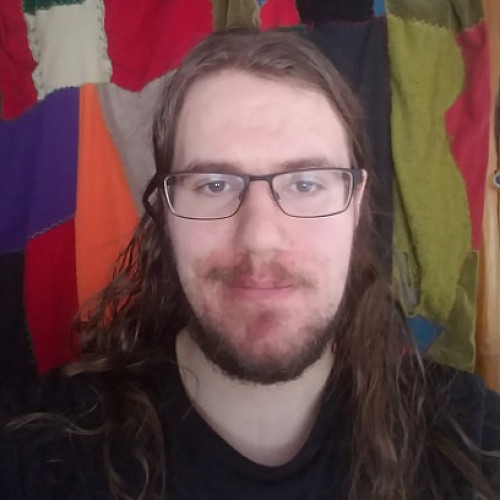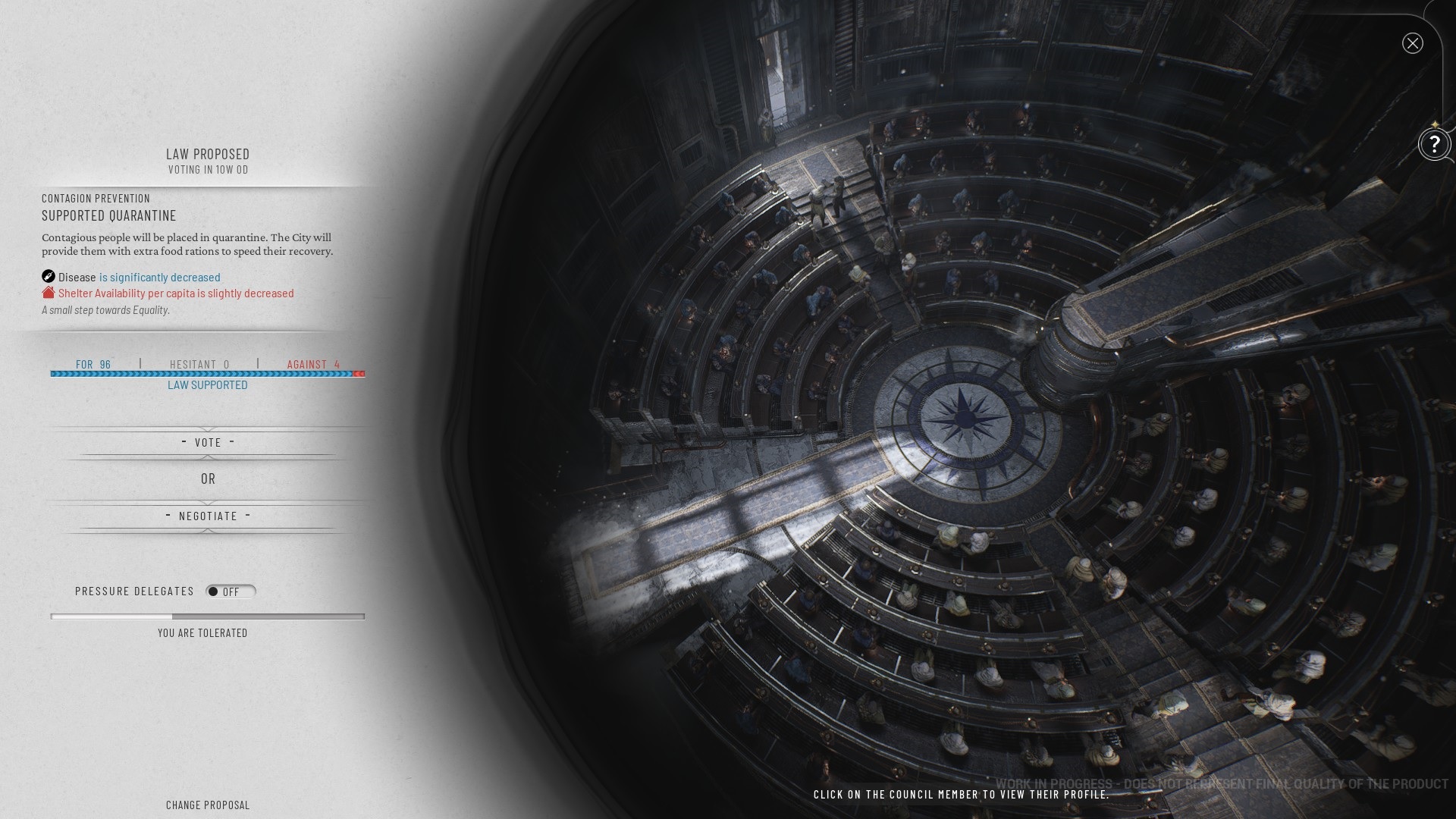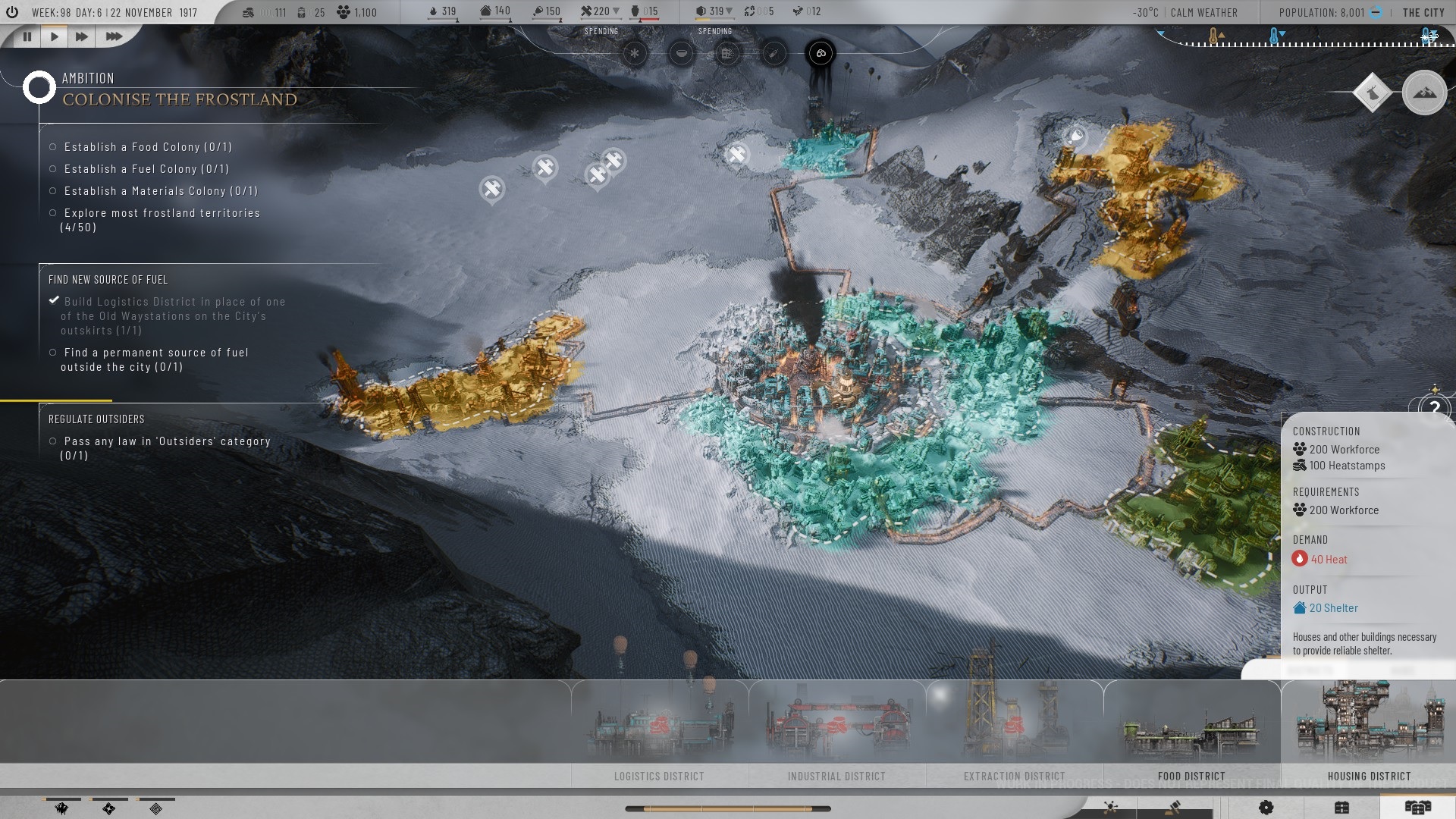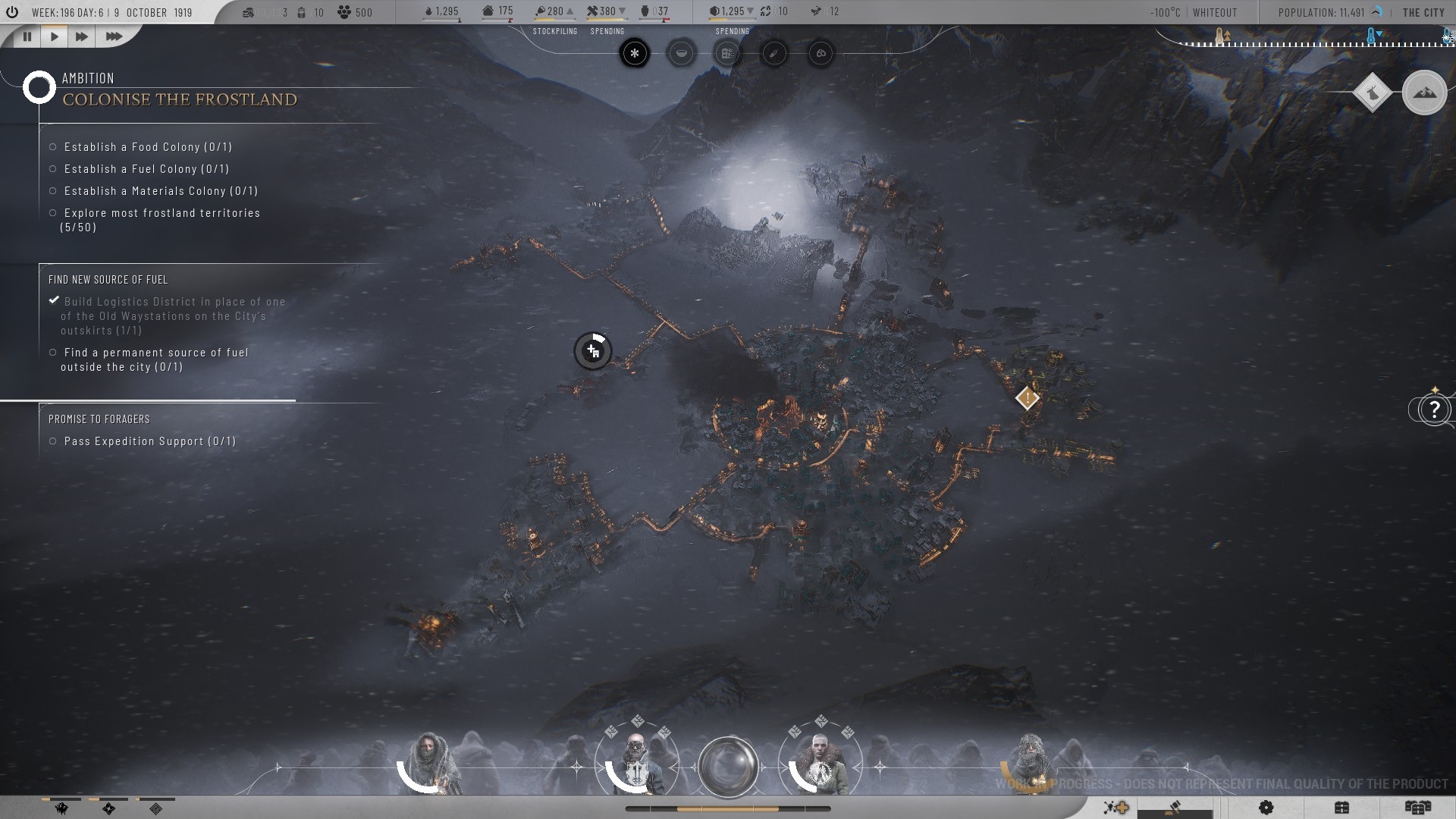In Frostpunk 2, decisions have consequences and new political tensions provide a more engaging experience
My time with the Frostpunk 2 preview showed me an ambitious sequel that has some room for improvement.

11 bit studios is returning to its dark world of icy alternate history.
Frostpunk 2 is on the way, the sequel to the team's 2018 alternate-history city-building survival game. In this ambitious sequel, the scale is vastly increased, and where once players managed a city of a few dozen to perhaps 300 individuals, they'll now have to contend with thousands upon thousands of workers who all need to be fed, housed, and kept alive to work. With that many workers comes new voices and challenges in managing to keep everyone happy.
I loved the original Frostpunk, so I'm happy to say I've spent a few hours with a beta build of Frostpunk 2 ahead of the game's planned release on Windows PC later this year, and I've come away impressed with the newfound scale this game offers. I'm also torn on the nature of some of the smaller decisions made so far. Here's my preview and thoughts.
From a gaggle of refugees to a city of survivors
The scale in Frostpunk 2 is immediately made clear upon starting, as I began by managing a city with thousands of workers. No longer does constructing an individual building suffice for growing the city's economy or freeing up extra housing. Instead, you now build dedicated districts, breaking up the ice and clearing paths to set up utterly massive housing complexes, coal mines, expedition team bases, and food processing facilities. If you lose heat to a district or sickness spreads, the death toll can be in the hundreds.
The game looks beautiful, and I never get tired of seeing districts rise with new roads and platforms, or watching icebreaker machines and automatons speed along. Running on my PC with an RTX 3070, i7-13700KF, and Samsung 980 SSD, all the settings are maxed out and the framerate is super-smooth.
Districts are built (and expanded) using a quasi-tile based system. This means you've still got fine control over the shape of the district and where it goes despite the large amount of space that each one takes up. Once expanded, a district can be further customized with special buildings, such as an advanced coal mine that boosts production for an industrial district that's already mining a coal deposit. These buildings become available through dedicated research via different intra-city factions — their differing opinions mean you need to consider each option carefully, but more on that in a bit — and there are advantages and disadvantages to each route.
That scale isn't just true of what you're managing, but how you're managing it as well, as time no longer passes day by day. Instead, weeks zoom by in the span of a few minutes, and short-term thinking is even more ill-advised than before. The beta version of Frostpunk 2 that I played ended after 300 in-game weeks, and I'd only spent a couple of hours in-game. Decisions have consequences, and it's no longer enough to simply keep people hopeful and remove tension. Now, you've got to play politics.
All the latest news, reviews, and guides for Windows and Xbox diehards.
Voting and negotiations are key
Frostpunk 2 introduces the Council, with you leading it as the city's steward. The Council is made up of representatives from the city's factions, with larger factions naturally taking more of the 100 seats on the Council. Only two factions are available at the start, with more to come in the full game, but these two will then split into further factions over time, complicating negotiations and bogging down the process of getting anything done.
Each faction has different values and goals, while every law requires at least 51 votes to pass in the Council. This means a huge amount of your time will be devoted to wheeling and dealing, trying to make sure that no particular group feels too excluded in order to avoid protests and workplace strikes.
As an example of how things might go, you might want to pass a law for more expedition support to speed up the process of exploring the frozen wastes. The Foragers and Icebloods — a conservative group that eschew advanced technology and an even more radical splinter faction — both support this concept, so that gets me 48 votes.
For success, I only need to convince a handful of others from the Machinists or their splinter faction, the Technocrats. Since the Machinists are already more fond of me than the Technocrats, I cut a deal with the Machinists: In exchange for supporting this vote (despite it being against their view), I could agree to let them bring up the next law for voting. If they try to repeal one of my many laws favoring the Foragers, I'll be angering the group that likes me the most. Instead, I opt to fund their community projects. While expensive, it gets them off my back without any chance of future repercussions.
This process gets more and more difficult as time goes on, and with every vote you'll find yourself more and more torn on how best to proceed. Of all the changes made for Frostpunk 2, the voting and faction system is by far the most compelling, and I'm eagerly looking forward to how many factions are in the full game.
Smaller details lost in the rush
With Frostpunk 2 leaping forward so boldly, there are a few elements that have been left behind whose absences are definitely felt. In my experience with the first game, much of what made it special was the small details.
Watching an automaton lumber along and working through the night felt meaningful because of the threat of running out of resources at night that had previously plagued the community. Seeing snow melt off of rooftops was a huge deal, because it meant I had finally stockpiled enough coal and researched the right tech to increase the generator's heat level. None of those are present in Frostpunk 2.
Some of these just wouldn't make sense or would be impossible now. There's no point to a day-night cycle if the days are passing in a couple of seconds, and the vast increase in the city's population means it no longer makes sense to manually build and assign automatons.
Still, there are some small details that could and should be kept in. The heat map, which was a great way of showing at a glance which buildings in your city were warm, should make its way back into this game. From This War of Mine to Frostpunk, 11 bit studios' games have always reveled in the quieter moments, and I hope to see those in the full game.
Ready to dive back into the ice
There's a lot to love about Frostpunk 2 so far, and that's just from a taste of one mode, without diving into the story or seeing alternate starting factions. It's clear that this game is reaching high, but it has come with the removal of some things I loved in its predecessor.
While I do hope that 11 bit studios can recapture some of the smaller moments and details that made the first game so special, the team cannot be accused of playing things too safe for this sequel. I truly admire the scope and reach of Frostpunk 2, and I'm looking forward to spending dozens of more hours negotiating and building up my city.
Frostpunk 2 is currently scheduled to launch on July 25, 2024 for Windows PC via Steam, the Epic Games Store, and GOG. It'll also be available day one in PC Game Pass. Frostpunk 2 is also coming to Xbox Series X|S and PlayStation 5 at a later date. When it does, it'll be available day one through Xbox Game Pass.
Frostpunk 2
The city must survive, but it's grown significantly. Thousands upon thousands now call the city home, and with those masses come factions with their own ideas demanding representation. 11 bit studios is looking to increase the scale and threat in this massive sequel, and it's coming later this year.
Buy from: GreenManGaming (Steam) | GOG

Samuel Tolbert is a freelance writer covering gaming news, previews, reviews, interviews and different aspects of the gaming industry, specifically focusing on Xbox and PC gaming on Windows Central. You can find him on Bluesky @samueltolbert.bsky.social.





